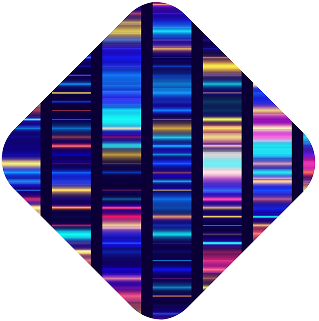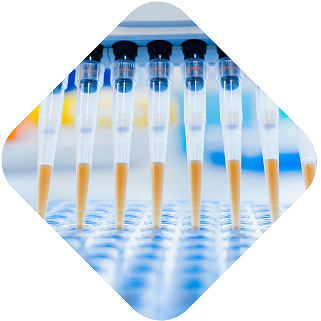Understanding H3 K27M–mutant diffuse midline glioma
If you or someone you care for has H3 K27M–mutant diffuse midline glioma, understanding your tumor can help with treatment planning
Understanding
H3 K27M–mutant diffuse midline glioma
If you or someone you care for has H3 K27M–mutant diffuse midline glioma, understanding your tumor can help with treatment planning
About diffuse midline glioma
Guide to your diagnosis
Getting a confirmed diagnosis of H3 K27M–mutant diffuse midline glioma is important because it gives your doctor insight into how to manage this type of brain cancer.
What each term in your diagnosis means
H3
The protein, histone H3, affected by the H3 K27M mutation
K27M–mutant
The amino acid normally found in the 27th position, lysine (or ”K”)
Due to a mutation, the amino acid now found in the 27th position, methionine (or “M”)
diffuse
A feature of how the tumor has spread
midline
The location of the tumor (the middle of the brain)
glioma
The type of brain tumor
H3 K27M and tumor formation
An H3 K27M mutation can play a role in diffuse midline glioma development
An H3 K27M mutation occurs in glial cells
A mutation is when a change occurs in the DNA. In glioma, this change happens in a type of brain cell called a glial cell and is not inherited.
A protein, histone H3, is changed
This mutation causes a change in a building block (amino acid) of a protein called histone H3.
Histone function can be affected
Histones regulate how genes work. The change in histone H3 affects its function, changing how genes are turned on and off.
A tumor may eventually develop
Disrupting the way the glial cell works can cause uncontrolled cancer cell growth, which may result in a type of brain tumor known as a diffuse midline glioma.
Cell function can be disrupted
The function of glial cells can be disrupted by changing the way certain genes are turned on and off.
An H3 K27M mutation occurs in glial cells
A mutation is when a change occurs in the DNA. In glioma, this change happens in a type of brain cell called a glial cell and is not inherited.
A protein, histone H3, is changed
This mutation causes a change in a building block (amino acid) of a protein called histone H3.
Histone function can be affected
Histones regulate how genes work. The change in histone H3 affects its function, changing how genes are turned on and off.
Cell function can be disrupted
The function of glial cells can be disrupted by changing the way certain genes are turned on and off.
A tumor may eventually develop
Disrupting the way the glial cell works can cause uncontrolled cancer cell growth, which may result in a type of brain tumor known as a diffuse midline glioma.
Other mutations in the glial cells may have caused diffuse midline glioma to develop.
DNA, deoxyribonucleic acid.
Detecting an H3 K27M mutation
An H3 K27M mutation is detected by first removing a small sample of the glioma in a procedure called a biopsy, followed by testing the tissue using:

A DNA test known as next-generation sequencing, which may be referred to as “NGS”
AND/OR

A laboratory test known as immunohistochemistry, which may be shortened to “IHC”
Types of care
Managing H3 K27M–mutant diffuse midline glioma
By using important information about the type of tumor and its size and location in the brain, your doctors will create a treatment plan to address the H3 K27M–mutant diffuse midline glioma.
Specialist care may involve:
Neurosurgery
Radiation therapy
Chemotherapy
Targeted therapy (like MODEYSO)
Supportive care